In August 1945, atomic bombs fell on Hiroshima and Nagasaki and forced the Japanese to surrender. Truth or myth? What ended the Pacific War?
The history of the world is full of distortions and understatements. Sometimes things considered facts have little to do with reality. On the other hand, events that seem too eerie to be true turn out to be the most real. In the "Truth or Myth" series, we will attempt to debunk or confirm both these less and more serious historical myths. The story is not as obvious as it seems!
Bombing of Japanese cities
On August 10, 1944, the Battle of Guam ended. Earlier this summer, the Americans managed to defeat the Japanese at Tinian and Saipan. These three islands form part of the Marian archipelago and were of great strategic importance to the powers fighting in the Pacific. The stakes are evidenced by the fact that it was here that the Japanese first started using kamikaze . However, suicide attacks by Japanese pilots did not help to stop the American army's offensive.
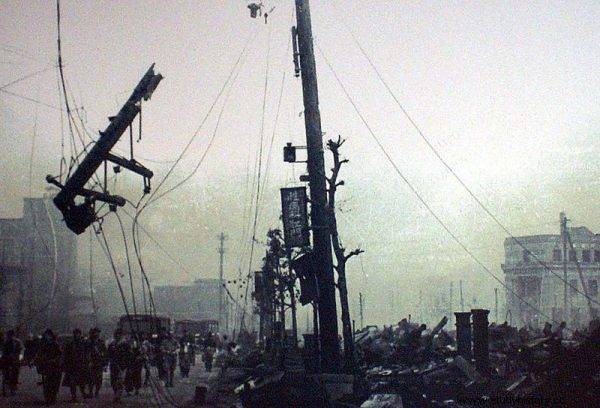
photo. Ishikawa Kouyou / public domain It is estimated that over 100,000 people died in the air raid on Tokyo. people
The Mariana Islands were important to the further course of the war, because they were close enough to Japan that they could be used to bombard local cities. It was from Tinian Island that Operation Meetinghouse - the largest bomb attack in history - began. It is estimated that over 100,000 people died in the air raid on Tokyo. people (more than during the nuclear attacks on Hiroshima or Nagasaki).
The transfer of hostilities to the heart of Japan had a devastating effect on the country's economy, the production capacity of the arms industry and the situation of the civilian population.
The Japanese lost at Okinawa
The capture of Okinawa by the Americans broke the Japanese fighting spirit. The defeat of the Japanese was sealed by the fact that the most powerful ship of the Japanese fleet - the battleship Yamato - was destroyed during the defense of the island. In the extremely hard and ferocious fighting that took place from April 1 to June 21, 1945, died around 20,000. American soldiers and over 70,000 Japanese soldiers . About 30,000 people also died. the inhabitants of the island.
Okinawa was the last bastion to defend the Land of the Rising Sun. When it was conquered despite desperate efforts, the Japanese finally stopped believing in victory in the war. The commanders realized that the goal of further fighting was not to win, but to provide the homeland with the best possible conditions for peace.
Soviet attack on Manchuria
One of the ideas of the Japanese to achieve this goal was to use the USSR as a mediator. Meanwhile in early August 1945, the Soviets began to distance themselves from Japanese diplomats . It was a preview of the events that would take place a few days later.
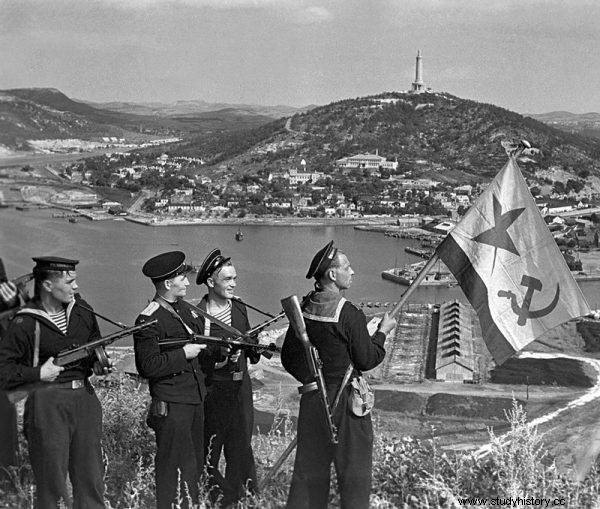
The next day, Soviet troops invaded Manchuria.
After the Potsdam conference, on August 8, 1945, the Japanese ambassador to the USSR was invited to the Kremlin. Vyacheslav Molotov handed his guest the declaration of war. The next day, Soviet troops attacked Manchuria. The then Prime Minister of Japan, Kantaro Suzuki, did not need the bombing of Nagasaki to conclude that "the game is over." The situation in Japan has become catastrophic.
Unable to prepare defense
The last hope of the Japanese to avoid unconditional surrender was to inflict losses on the Allies so severe as to ease the conditions of peace. As the civilian population felt the cruel consequences of the nuclear attacks on Hiroshima and Nagasaki, in the highest circles of the Japanese authorities seriously discussed Ketsu-Go - a strategic plan to defend the Japanese islands against American landing . The combat scenario assumed the use of civilians and every possible weapon to arrange a real bloodbath for the enemies.
According to estimates prepared by the US military staff, the losses incurred during the landing in Japan (Operation Downfall) would be counted in millions. When the Japanese began to prepare to defend the coast, it turned out that they were unable to implement even the basic assumptions of the plan. The civilians, oppressed by constant air raids and suffering from hunger, were fed up with the war.
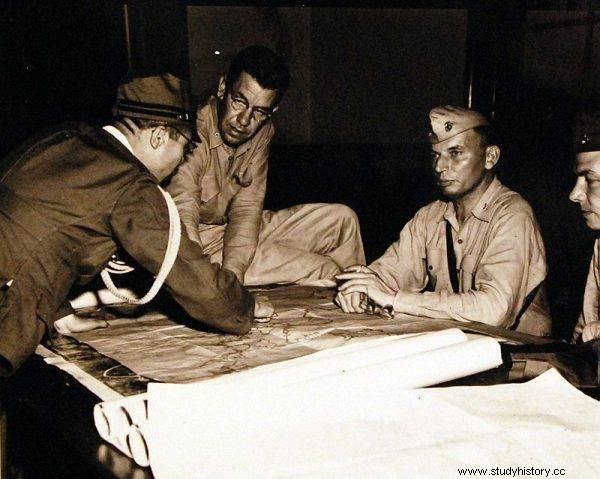
According to estimates prepared by the US military staff, the losses incurred during the landing in Japan (Operation Downfall) would be in the millions.
The authorities began to seriously fear the rebellion of citizens. Most of the defense plants were badly damaged and incapable of producing weapons. Despite these obvious facts, the military still insisted on continuing the preparations. It is not known how history would have developed had Emperor Hirohito not joined the discussion on the future of Japan on August 13, 1945.
The Voice of Emperor Hirohito
The Emperor of Japan, although he was theoretically the most important person in the state, had no real political power. From 1944, the country was ruled by the Supreme War Management Council, the so-called The Big Six. In early August 1945, it was composed of four military representatives, Prime Minister Kantarō Suzuki and Foreign Minister Shigenori Togo.
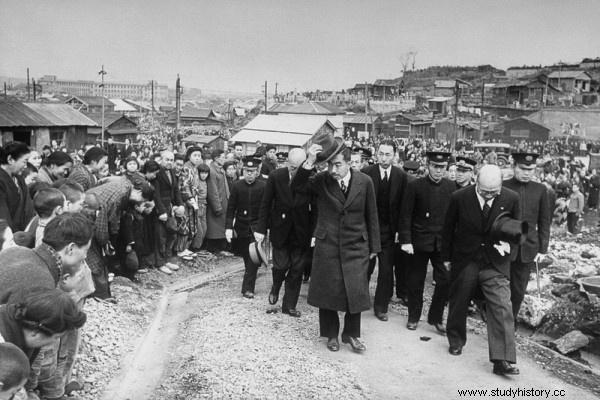
The Emperor of Japan, although he was theoretically the most important person in the country, had no real political power.
On August 13, there was a stalemate at the meeting of the council. Three of its members agreed to accept the terms of peace as long as the Allies agreed to preserve the prerogatives of Emperor Hirohito . The rest expected bigger concessions or opted for fighting to the last drop of blood. The impasse was finally broken by the emperor himself. So far, Hirohito has been withdrawn and passive. At the moment when the fate of his country was at stake, he said:
I seriously considered the situation at home and abroad and came to the conclusion that continuing the war can only mean destroying the nation and prolonging the bloodshed and cruelty in the world (...). I cannot bear to see my innocent people fighting any longer. Ending the war is the only way to restore peace to the world and free the nation from the terrible suffering it is burdened with.
End of the war
The US response to Japan's willingness to surrender was ambiguous, as the Americans did not guarantee that the emperor would remain on the throne. Nevertheless, Hirohito once again asked the Supreme Council to accept the terms of peace. In an emotional speech on August 14, 1945, he stated: "It doesn't matter what happens to me, but I wonder how I can respond to the spirits of my ancestors if my nation is turned to ashes." .
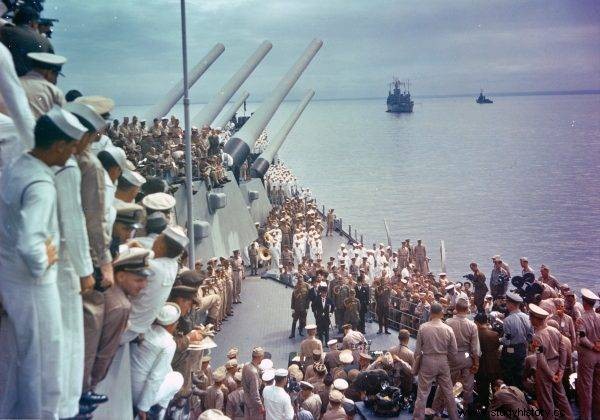
The nuclear attack on Hiroshima and Nagasaki had minimal impact on Japan's surrender decision.
The nuclear attack on Hiroshima and Nagasaki had minimal impact on Japan's surrender decision. The power of nuclear weapons did not impress the Japanese military as much as it is presented today. They assumed that with well-organized anti-aircraft defense it would be possible to neutralize further raids of this type.
The truth was that Japan's situation had worsened every month since mid-1944. The aforementioned defeats made the Japanese wonder not so much whether they would win the war, but how badly they would be beaten. In the last days before the surrender, the main problem for the authorities was whether the Americans would allow Hirohito to retain the imperial title, rather than the number of "nukes" in their arsenal. General Douglas MacArthur himself admitted years later that Japan would surrender by the end of August 1945, even without dropping bombs on Hiroshima and Nagasaki.
Nuclear bombs forced the Japanese to surrender. Myth
Bibliography:
- Craig, The Fall of Japan. The Final Weeks of World War II in the Pacific , New York 2015.
- Tillman, Whirlwind The Air War Against Japan 1942-1945 , New York 2010.
- Dower, Embracing Defeat Japan in the Wake of World War II , New York 2000.
- Kozieł, Hiroshima:the crime of the State Department , "Rzeczpospolita" (accessed on November 27, 2021).
